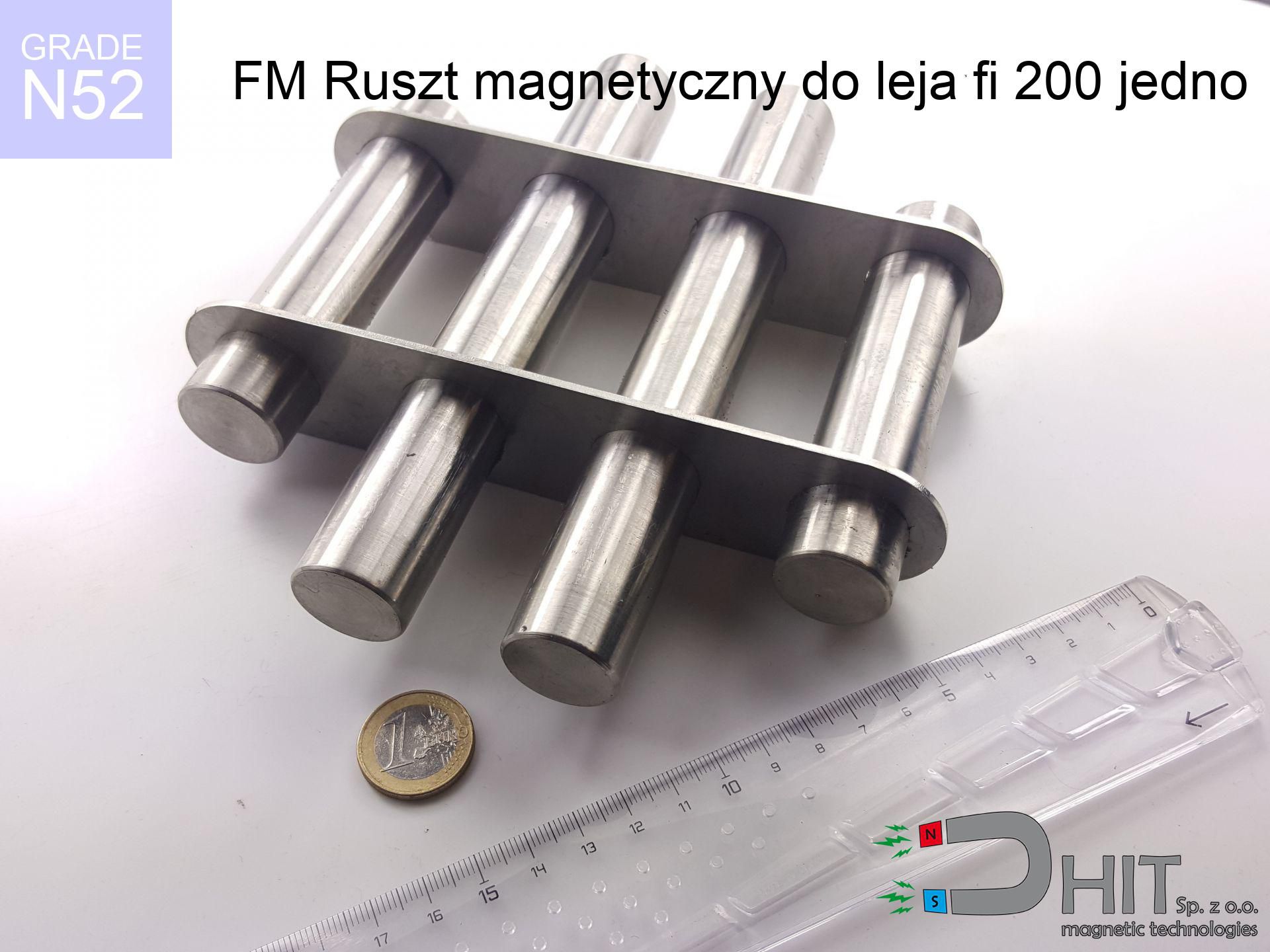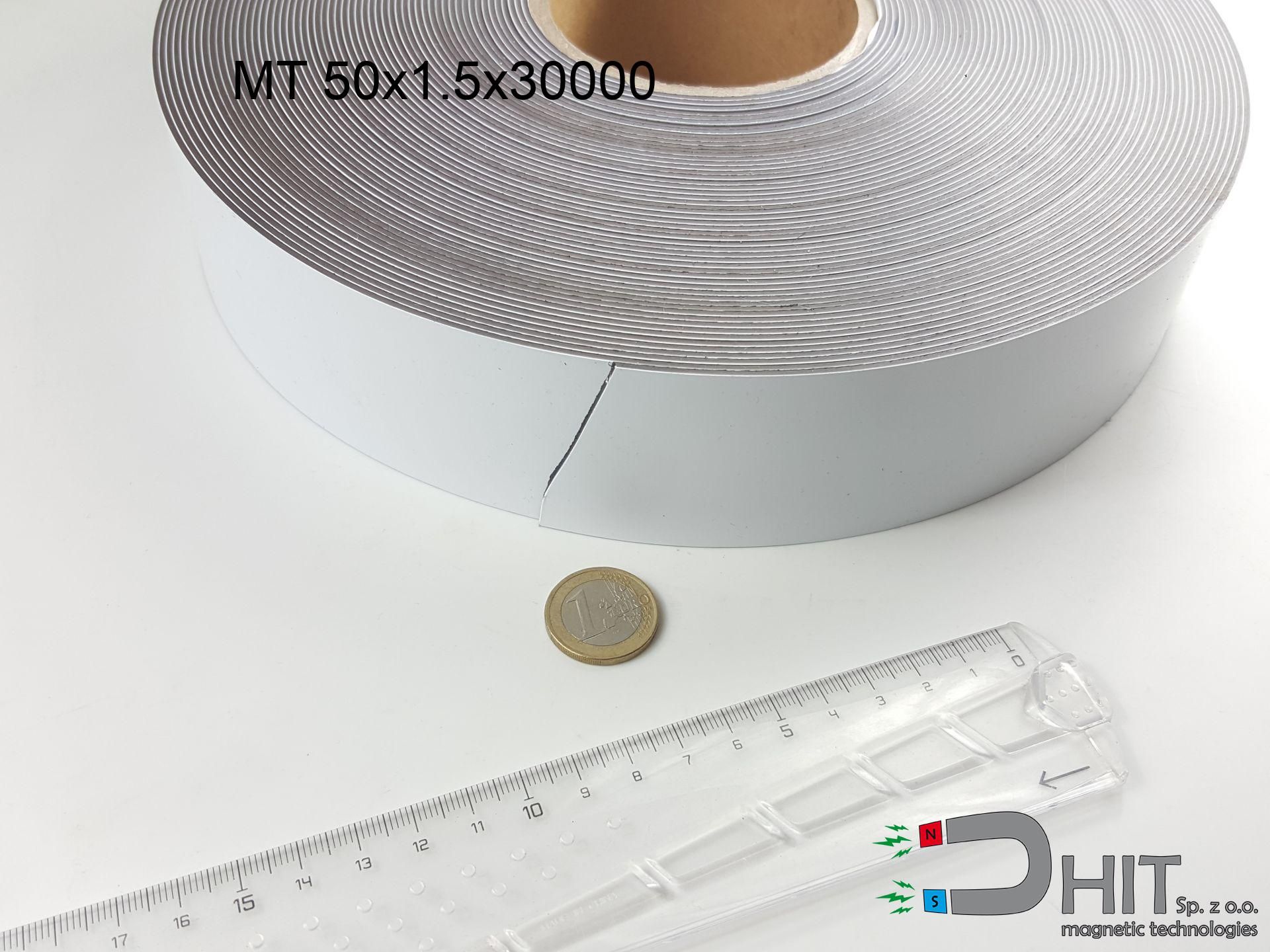SM 32x175 [2xM8] / N52 - magnetic separator
magnetic separator
Catalog no 130359
GTIN/EAN: 5906301813071
Diameter Ø
32 mm [±1 mm]
Height
175 mm [±1 mm]
Weight
970 g
Magnetic Flux
~ 10 000 Gauss [±5%]
602.70 ZŁ with VAT / pcs + price for transport
490.00 ZŁ net + 23% VAT / pcs
bulk discounts:
Need more?
Give us a call
+48 22 499 98 98
otherwise get in touch by means of
contact form
our website.
Weight along with shape of a magnet can be estimated with our
power calculator.
Orders placed before 14:00 will be shipped the same business day.
Product card - SM 32x175 [2xM8] / N52 - magnetic separator
Specification / characteristics - SM 32x175 [2xM8] / N52 - magnetic separator
| properties | values |
|---|---|
| Cat. no. | 130359 |
| GTIN/EAN | 5906301813071 |
| Production/Distribution | Dhit sp. z o.o. |
| Country of origin | Poland / China / Germany |
| Customs code | 85059029 |
| Diameter Ø | 32 mm [±1 mm] |
| Height | 175 mm [±1 mm] |
| Weight | 970 g |
| Material Type | Stainless steel AISI 304 / A2 |
| Magnetic Flux | ~ 10 000 Gauss [±5%] |
| Size/Mount Quantity | 2xM8 |
| Polarity | circumferential - 6 poles |
| Casing Tube Thickness | 1 mm |
| Manufacturing Tolerance | ±1 mm |
Magnetic properties of material N52
| properties | values | units |
|---|---|---|
| remenance Br [min. - max.] ? | 14.2-14.7 | kGs |
| remenance Br [min. - max.] ? | 1420-1470 | mT |
| coercivity bHc ? | 10.8-12.5 | kOe |
| coercivity bHc ? | 860-995 | kA/m |
| actual internal force iHc | ≥ 12 | kOe |
| actual internal force iHc | ≥ 955 | kA/m |
| energy density [min. - max.] ? | 48-53 | BH max MGOe |
| energy density [min. - max.] ? | 380-422 | BH max KJ/m |
| max. temperature ? | ≤ 80 | °C |
Physical properties of sintered neodymium magnets Nd2Fe14B at 20°C
| properties | values | units |
|---|---|---|
| Vickers hardness | ≥550 | Hv |
| Density | ≥7.4 | g/cm3 |
| Curie Temperature TC | 312 - 380 | °C |
| Curie Temperature TF | 593 - 716 | °F |
| Specific resistance | 150 | μΩ⋅cm |
| Bending strength | 250 | MPa |
| Compressive strength | 1000~1100 | MPa |
| Thermal expansion parallel (∥) to orientation (M) | (3-4) x 10-6 | °C-1 |
| Thermal expansion perpendicular (⊥) to orientation (M) | -(1-3) x 10-6 | °C-1 |
| Young's modulus | 1.7 x 104 | kg/mm² |
Chemical composition
| iron (Fe) | 64% – 68% |
| neodymium (Nd) | 29% – 32% |
| boron (B) | 1.1% – 1.2% |
| dysprosium (Dy) | 0.5% – 2.0% |
| coating (Ni-Cu-Ni) | < 0.05% |
Environmental data
| recyclability (EoL) | 100% |
| recycled raw materials | ~10% (pre-cons) |
| carbon footprint | low / zredukowany |
| waste code (EWC) | 16 02 16 |
See more proposals
Pros and cons of rare earth magnets.
Strengths
- Their power remains stable, and after approximately 10 years it decreases only by ~1% (according to research),
- Neodymium magnets are characterized by exceptionally resistant to magnetic field loss caused by external magnetic fields,
- Thanks to the metallic finish, the plating of nickel, gold, or silver-plated gives an clean appearance,
- Neodymium magnets ensure maximum magnetic induction on a small area, which allows for strong attraction,
- Made from properly selected components, these magnets show impressive resistance to high heat, enabling them to function (depending on their form) at temperatures up to 230°C and above...
- Thanks to freedom in shaping and the ability to adapt to complex applications,
- Key role in advanced technology sectors – they are used in HDD drives, electric drive systems, precision medical tools, and other advanced devices.
- Relatively small size with high pulling force – neodymium magnets offer impressive pulling force in tiny dimensions, which allows their use in miniature devices
Disadvantages
- They are fragile upon heavy impacts. To avoid cracks, it is worth protecting magnets in a protective case. Such protection not only protects the magnet but also improves its resistance to damage
- Neodymium magnets demagnetize when exposed to high temperatures. After reaching 80°C, many of them experience permanent weakening of power (a factor is the shape and dimensions of the magnet). We offer magnets specially adapted to work at temperatures up to 230°C marked [AH], which are extremely resistant to heat
- When exposed to humidity, magnets start to rust. To use them in conditions outside, it is recommended to use protective magnets, such as magnets in rubber or plastics, which secure oxidation as well as corrosion.
- We suggest cover - magnetic mechanism, due to difficulties in creating nuts inside the magnet and complicated shapes.
- Potential hazard resulting from small fragments of magnets can be dangerous, when accidentally swallowed, which gains importance in the aspect of protecting the youngest. It is also worth noting that small components of these magnets are able to disrupt the diagnostic process medical in case of swallowing.
- Due to neodymium price, their price is higher than average,
Holding force characteristics
Best holding force of the magnet in ideal parameters – what contributes to it?
- with the use of a sheet made of low-carbon steel, guaranteeing maximum field concentration
- possessing a thickness of at least 10 mm to avoid saturation
- with a surface perfectly flat
- under conditions of gap-free contact (surface-to-surface)
- for force acting at a right angle (in the magnet axis)
- in stable room temperature
Lifting capacity in real conditions – factors
- Space between magnet and steel – even a fraction of a millimeter of separation (caused e.g. by varnish or unevenness) drastically reduces the magnet efficiency, often by half at just 0.5 mm.
- Angle of force application – highest force is available only during pulling at a 90° angle. The resistance to sliding of the magnet along the surface is typically many times smaller (approx. 1/5 of the lifting capacity).
- Wall thickness – thin material does not allow full use of the magnet. Part of the magnetic field penetrates through instead of generating force.
- Metal type – not every steel reacts the same. High carbon content worsen the interaction with the magnet.
- Surface condition – ground elements ensure maximum contact, which improves force. Uneven metal reduce efficiency.
- Temperature – heating the magnet results in weakening of force. It is worth remembering the maximum operating temperature for a given model.
Lifting capacity testing was performed on plates with a smooth surface of optimal thickness, under perpendicular forces, whereas under attempts to slide the magnet the lifting capacity is smaller. Additionally, even a small distance between the magnet and the plate lowers the lifting capacity.
Safe handling of neodymium magnets
Sensitization to coating
Medical facts indicate that nickel (the usual finish) is a potent allergen. If your skin reacts to metals, avoid direct skin contact and select encased magnets.
Dust is flammable
Machining of NdFeB material poses a fire hazard. Neodymium dust reacts violently with oxygen and is difficult to extinguish.
Thermal limits
Regular neodymium magnets (N-type) lose power when the temperature goes above 80°C. Damage is permanent.
Caution required
Before starting, read the rules. Uncontrolled attraction can break the magnet or hurt your hand. Be predictive.
Do not give to children
Only for adults. Small elements pose a choking risk, causing severe trauma. Keep out of reach of kids and pets.
GPS Danger
An intense magnetic field negatively affects the functioning of magnetometers in smartphones and navigation systems. Do not bring magnets near a smartphone to avoid breaking the sensors.
Health Danger
Patients with a heart stimulator must maintain an absolute distance from magnets. The magnetic field can disrupt the functioning of the implant.
Hand protection
Large magnets can crush fingers instantly. Under no circumstances put your hand betwixt two strong magnets.
Protect data
Data protection: Strong magnets can damage payment cards and sensitive devices (pacemakers, medical aids, mechanical watches).
Beware of splinters
Despite metallic appearance, the material is delicate and not impact-resistant. Do not hit, as the magnet may crumble into hazardous fragments.

![Magnetic bar SM 32x175 [2xM8] / N52 Magnetic bar SM 32x175 [2xM8] / N52](https://cdn3.dhit.pl/graphics/banners/magnet.webp)
![SM 32x175 [2xM8] / N52 - magnetic separator](https://cdn3.dhit.pl/graphics/products/sm-32x175-2xm8-cep.jpg)
![SM 25x350 [2xM8] / N42 - magnetic separator SM 25x350 [2xM8] / N42 - magnetic separator](https://cdn3.dhit.pl/graphics/products/sm-25x350-2xm8-pim.jpg)




